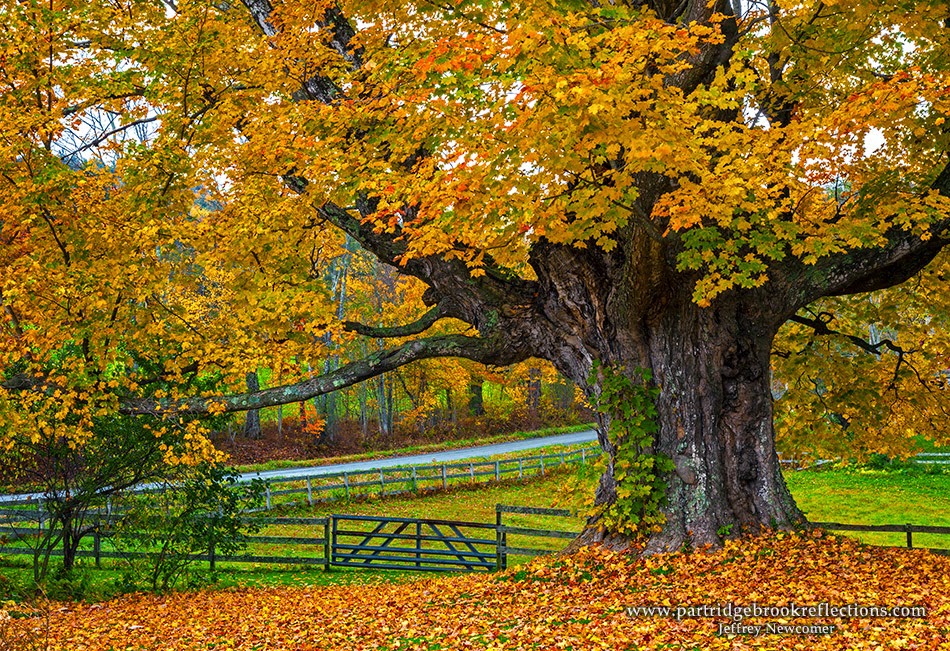Autumn is always about being out on the road. It starts sometime in September when I head north in an effort to catch the early color.
 As the leaves change closer to home the trips can be shorter but often more frequent. It is not unusual for me to spend most of many days out wandering the back roads looking for new and familiar color. All this driving has reminded me of the importance of driving safety and etiquette. I used to tell people that I expected that I would die in a fiery crash when, distracted by some colorful tree, I wrap my car around a tree, but over the years, I think I have learned to be more careful when out on a shoot. I am still susceptible to distractions from the breathtaking beauty of New England, but I try to follow a few simple rules in hopes of extending years that I have to enjoy splendor.
As the leaves change closer to home the trips can be shorter but often more frequent. It is not unusual for me to spend most of many days out wandering the back roads looking for new and familiar color. All this driving has reminded me of the importance of driving safety and etiquette. I used to tell people that I expected that I would die in a fiery crash when, distracted by some colorful tree, I wrap my car around a tree, but over the years, I think I have learned to be more careful when out on a shoot. I am still susceptible to distractions from the breathtaking beauty of New England, but I try to follow a few simple rules in hopes of extending years that I have to enjoy splendor. Keep Your Eyes On the Road
Duh. This seems too obvious to require mentioning, but it can be
 |
| Fly by Foliage |
Drive Past and Come Back
 |
| Drive Past |
This often occurred without any recognition of the condition of the roadside or who was behind me. It is amazing that I'm still here, but somehow I survived to adopt my most important driving mantra, "Drive By and Come Back". It is really very simple. When I see something that might turn out to be good opportunity, I don't dwell on it. I continue down the road until I can safely turn around and then find a safe place to pull over to study the scene. Often when I return the vista is not what I had hoped, but I've only lost a few minutes of time and I get to live to see the next spectacular view just around the corner.
Get Your Car Off the Road
.jpg) |
| Off the Road |

Let Them Past

Even on what would appears to be deserted back roads, it is amazing how often cars will come up behind me. It is certainly, at least in part, because I tend to amble along as I survey my surroundings. It is good manners to let these innocent folks pass and I always feel more comfortable when my frequent scans of the rear view mirror show no impediment to my slow progress and occasional stops.

Limit Distractions
 |
| The Look |
Do I really have to say, "Don't text while driving!"? On a shoot I
have many potential distractions. My GPS and iPhone are mounted at the corner of the windshield, away from my view of the road, but still crying for attention. I usually have a map on the passenger seat, coffee and a sandwich and of course Nellie clamoring to be let out to pee. I do what I can. My phone is now set up for hands free operation. I select my music before I hit the road and I usually mute the lovely voice of my GPS as she constantly tries to send me down roads that are actually unnavigable cow paths. I have no easy solution for Nellie. I just try to let her out whenever it is safe.
 |
| Ok, I Don't Hang the Map on the Dash |
Most of these "Rules of the Road" should seem self evident, but it is a valuable exercise for me to state them more formally. Hopefully it will increase the chances that I may actually follow them and perhaps survive to enjoy for a little longer the wonders of New England. Drive Safe.
Jeffrey Newcomer
Partridgebrookreflections.com





















.jpg)































